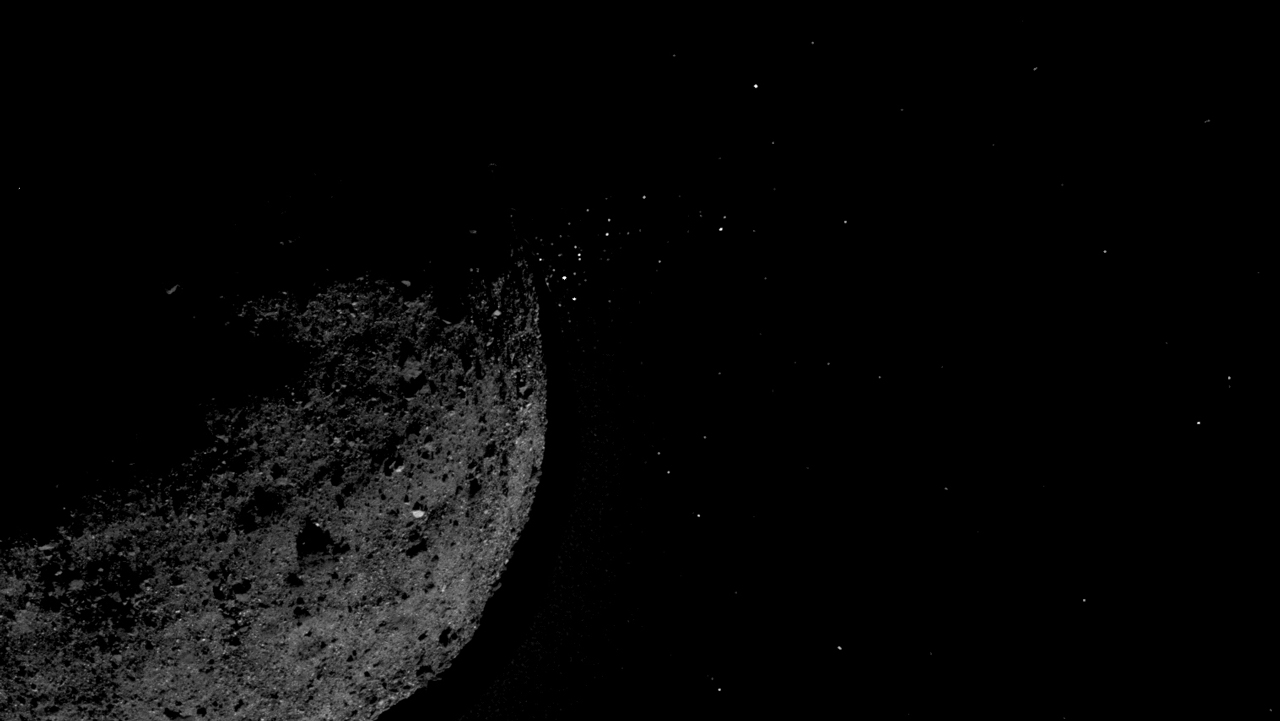Aerospace engineering assistant professor reports asteroid surface sampling a success
Published: Nov 4, 2020 2:45 PM
By Cassie Montgomery
NASA’s OSIRIS-REx mission recently completed a complex series of tasks that involved landing on, sampling and departing from Asteroid Bennu, a carbonaceous asteroid more than 321 million kilometers from Earth. Auburn University aerospace engineering assistant professor Masatoshi Hirabayashi, a collaborator supporting the OSIRIS-REx team’s scientific investigations, reports that the sampling mission was successful and the spacecraft collected at least 2 ounces of the asteroid’s surface material.
The sampling event highlights the mission team’s ability to pinpoint the spacecraft’s landing position, a feat completed without the benefit of conventional positioning technology, Hirabayashi said.
“The team spent lots of time analyzing the data to find proper locations to sample with proper safety. I have seen their tremendous efforts to reduce the uncertainties of spacecraft positioning,” he said. “To land on the target point, which was surrounded by large boulders, the spacecraft needed to know its position accurately without GPS. Engineers and scientists carefully analyzed and designed a proper operation sequence. This success came from this long-term tireless effort.”
In the end, OSIRIS-REx landed within 3 feet of the targeted location site Nightingale and was in contact with Bennu’s surface for approximately 6 seconds to complete the Touch-And-Go (TAG) sampling.
“The TAG operation needs to be done quickly. The reason is that the spacecraft needs to apparently be static, or not moving, with respect to the surface to sample materials,” Hirabayashi said. “If the spacecraft stays longer, because Bennu is rotating rapidly, the spacecraft would start to move and have a higher risk of colliding with surrounding boulders.”
The sampling effort did not go completely as planned and required nimble decision-making by the NASA team. In images of the collection captured by the spacecraft’s camera, it appeared several larger asteroid particles prevented the sampling collector to close and as such, smaller particles were escaping. To secure as much of the sample as possible, the team decided to cancel several subsequent activities and moved to immediately stow the sample in the Sample Return Capsule to preserve the asteroid material on its return voyage to Earth.
Hirabayashi is also a co-investigator for Hayabusa2, a Japanese asteroid exploration mission focused on targeting Ryugu, a carbonaceous near-Earth asteroid. His research investigates the geophysical features of target asteroids such as Bennu and Ryugu.
Observations from OSIRIS-REx and Hayabusa2 have yielded new findings and opened up new unsolved questions for researchers, including clues to the history of the solar system and potential answers to how asteroids such as Bennu and Ryugu have survived violent collisional evolutions.
“Where are Bennu and Ryugu coming from? These asteroids are considered to be primitive and to hold the ancient history of the solar system because they possess hydrated minerals – indications of water,” Hirabayashi said. “This question directly addresses where life came from.”
Media Contact: , cmontgomery@auburn.edu, 334.844.3668
NASA’s OSIRIS-REx sample collection mission performed a successful “Touch-And-Go” (TAG) maneuver. Image credits: NASA/Goddard/University of Arizona

